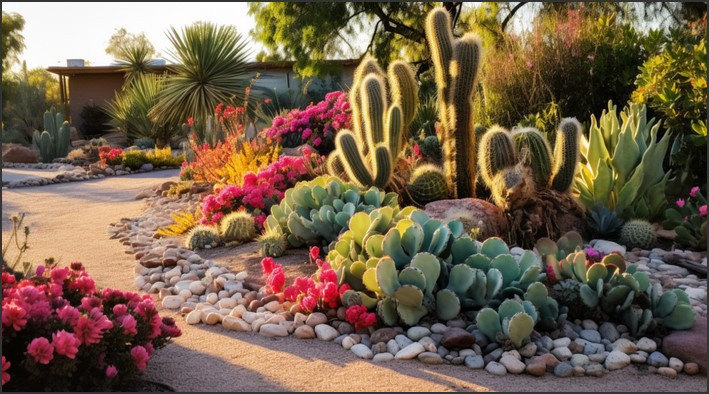
Water-Wise Wonders: Creating a Xeriscape Garden is a comprehensive guide that provides insights into the creation and maintenance of a xeriscape garden. Xeriscaping is a unique form of gardening that utilizes water-efficient plants and landscaping techniques to conserve water and create a sustainable environment. This guide offers practical advice, step-by-step instructions, and expert tips on how to transform any garden into a water-wise wonder. It covers everything from choosing the right plants and designing the layout to watering strategies and long-term care. Ideal for gardeners of all skill levels, this guide is a valuable resource for anyone looking to create a beautiful, low-maintenance, and eco-friendly outdoor space.
Mastering the Art of Xeriscape Garden: A Comprehensive Guide to Water-Wise Wonders
Water-wise wonders, also known as xeriscape gardens, are a revolutionary approach to landscaping that not only conserves water but also creates a visually appealing environment. This innovative gardening technique is gaining popularity worldwide, especially in regions with water scarcity. Xeriscape gardening is not just about planting drought-tolerant plants; it’s a comprehensive approach that involves planning, soil improvement, efficient irrigation, and appropriate maintenance.
The first step in creating a xeriscape garden is careful planning and design. This involves selecting the right location for your garden, considering the sunlight exposure, soil type, and existing vegetation. It’s essential to create a design that maximizes the use of rainwater and reduces water runoff. This can be achieved by incorporating features like rain gardens and permeable paving.
Next, improving the soil is a crucial aspect of xeriscape gardening. Healthy soil retains more water and provides a better environment for plant roots. Adding organic matter like compost can significantly improve soil structure and water-holding capacity. It’s also important to choose the right plants for your xeriscape garden. Native plants or plants adapted to your local climate are usually the best choices as they require less water and are more resistant to local pests and diseases.
Efficient irrigation is another key component of xeriscape gardening. While these gardens are designed to survive with minimal water, they do require some watering, especially during the establishment phase. Drip irrigation systems or soaker hoses are more efficient than traditional sprinklers as they deliver water directly to the plant roots, reducing evaporation. It’s also advisable to water in the early morning or late evening when temperatures are cooler to further minimize evaporation.
Lastly, appropriate maintenance is vital to keep your xeriscape garden thriving. This includes regular weeding, pruning, and mulching. Mulch helps retain soil moisture, suppress weeds, and regulate soil temperature. It’s also important to monitor your garden regularly for any signs of pest infestations or diseases.
Creating a xeriscape garden is not just about saving water; it’s about creating a sustainable and resilient landscape. These gardens are typically less labor-intensive and more cost-effective in the long run as they require less water, fertilizer, and maintenance. They also provide habitat for local wildlife and contribute to biodiversity.
However, it’s important to note that xeriscape gardening is not a one-size-fits-all approach. What works in one region may not work in another. Therefore, it’s essential to do your research and consult with local gardening experts or extension services to understand the specific needs of your local environment.
In conclusion, xeriscape gardening is a practical and sustainable approach to landscaping that can help conserve water and create a beautiful and resilient garden. It requires careful planning, soil improvement, efficient irrigation, and appropriate maintenance. With the right knowledge and resources, anyone can master the art of xeriscape gardening and create their own water-wise wonder.




